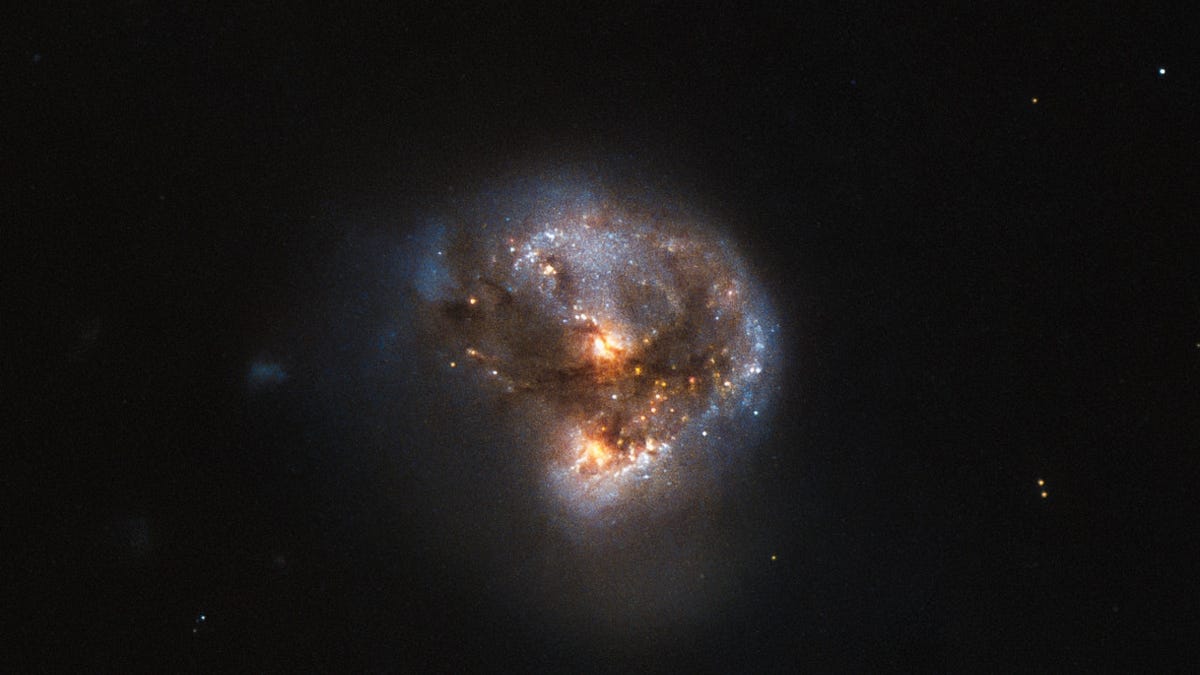Hubble closes out 2016 with a glorious megamaser
It's a galaxy like a laser, emitting microwaves instead of light.

The galaxy you see in Hubble's newest release is called IRAS 16399-0937, and it's located 370 million light-years away from Earth. And if it doesn't look like your regular everyday galaxy, like the neat spirals and ellipticals, well, it's because it isn't one. It's what is known as a megamaser, a galaxy that is beaming out intense microwave emission.
This image, taken using Hubble's Advanced Camera for Surveys and NearInfrared Camera and Multi-Object Spectrometer, is the most detailed of the galaxy yet, revealing a lot about what's happening deep inside. And it's galactic-scale turmoil. Rather than one core, IRAS 16399-0937 has two. They are around 11,000 light-years apart from one another (for context, Alpha Centauri, Earth's closest neighbouring star, is 4.3 light-years away), yet they are in the process of merging, interacting in a giant cloud of gas and dust.
The two parts are named IRAS-16399N for the northern core and IRAS-16399S for the southern core, and they seem to be very different from one another. The southern core is hugely active, a starburst region popping out new stars at a tremendous rate. The northern is nearly the opposite, a region of weakly-ionised neutral gases and home to an enormous black hole 100 million times the mass of the sun. Sagittarius A*, the supermassive black hole at the centre of the Milky Way, is only 4 million times the mass of the sun.
If you want a desktop wallpaper of IRAS-16399-0937, you can find various sizes on the Space Telescope website.

